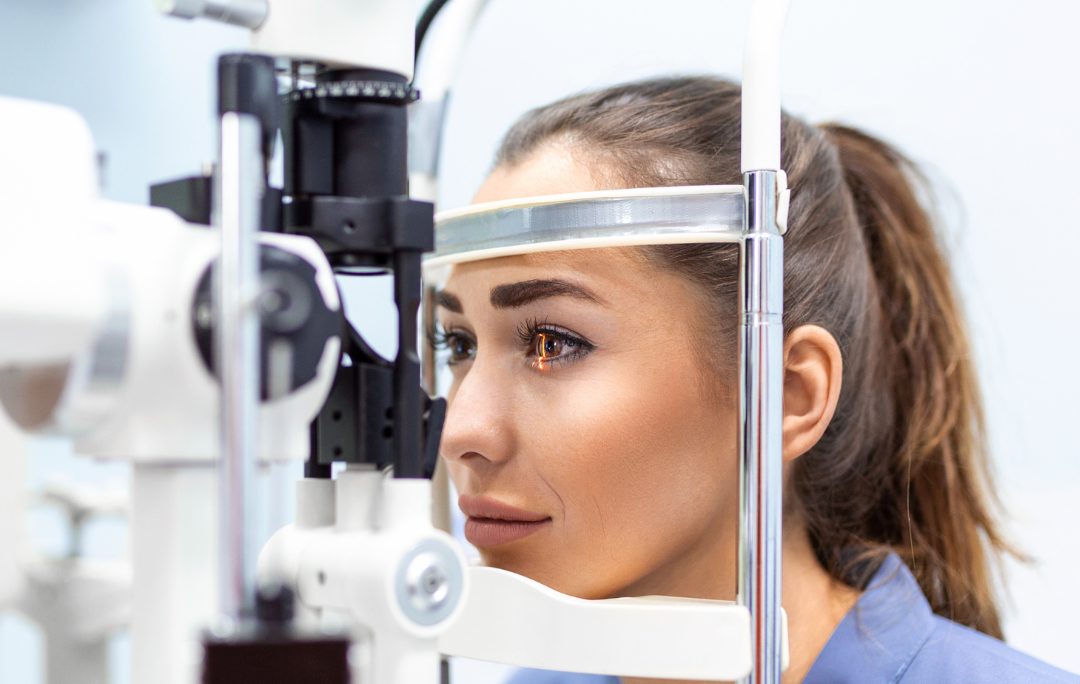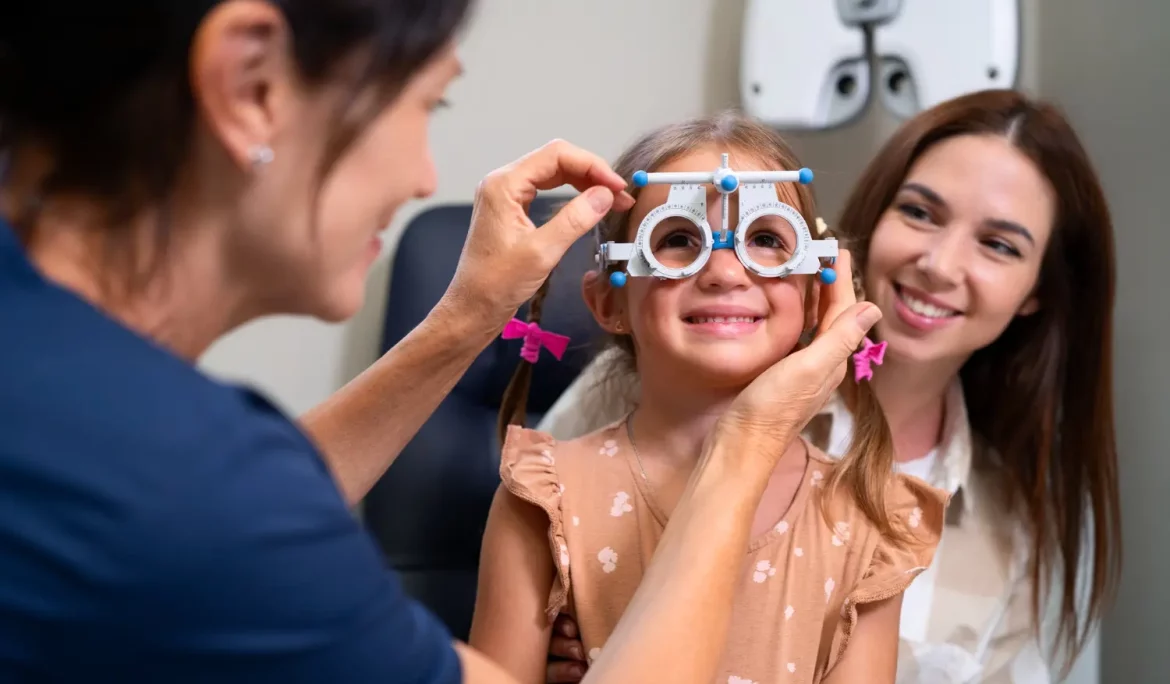Smartphones have become a huge part of daily life, whether you’re working, catching up with friends, or just unwinding with your favorite apps.
But all that screen time can take a toll on your eyes, leading to dryness, fatigue, and discomfort.
The more time you spend staring at your phone, the harder your eyes have to work.
Simple habits, like holding your phone too close or forgetting to blink, can slowly affect your vision without you even realizing it.
As an optometrist Calgary AB, we see more and more people dealing with digital eye strain. It’s a growing issue, but the good news is that there are easy ways to protect your eyes.
You don’t have to cut back on screen time completely. A few small changes can make a big difference in keeping your eyes comfortable and healthy.
1. Adjust Your Phone’s Refresh Rate for Smoother Viewing
Your eyes are constantly adjusting to the movement on your screen. If your phone’s refresh rate is too low, text and images may appear choppy, making your eyes work harder to process what’s in front of you. This can lead to strain, discomfort, and even headaches after extended use. A smoother refresh rate of 90Hz or higher allows for more natural movement, reducing visual fatigue. Checking your display settings and increasing the refresh rate where possible is an easy way to make screen time more comfortable.
2. Reduce Glare by Cleaning Your Screen Regularly
A smudged or dusty screen does more than just look unappealing, it forces your eyes to strain as they try to focus through the glare. Over time, this unnecessary effort can lead to fatigue, dryness, and even mild headaches. Keeping your phone’s screen clean with a microfiber cloth ensures sharper visibility, better contrast, and a more comfortable viewing experience. Making this a daily habit takes just a few seconds but can make a noticeable difference in reducing eye strain.
3. Hold Your Phone at Eye Level to Avoid Neck and Eye Strain
Most people instinctively look down when using their phones, but this puts extra strain on both your eyes and your neck muscles. The downward angle forces your eyes to work harder to focus, which can lead to discomfort and fatigue over time. Holding your phone at eye level promotes a more natural viewing position, reducing stress on both your vision and posture. If holding your phone higher feels tiring, consider using a phone stand or resting your elbows on a surface to maintain a comfortable viewing height.
4. Use Dark Mode in Low-Light Settings to Reduce Eye Fatigue
Bright white backgrounds can feel overwhelming in dim lighting, making your eyes work harder to process what’s on the screen. Dark mode helps by reducing overall brightness, which makes reading more comfortable and prevents your eyes from constantly adjusting between a bright screen and a dark environment. This feature is especially helpful for nighttime reading or low-light settings, as it reduces glare and minimizes contrast-related fatigue. If ever, you do find yourself frequently using your phone in the dark, try switching to dark mode right away since it can make a significant difference in overall eye comfort.
5. Increase Contrast Instead of Just Raising Brightness
When words and images seem dull or difficult to read, many people instinctively increase screen brightness, but this can actually cause more strain. Instead, increasing contrast makes text and visuals clearer without putting additional stress on your eyes. Most smartphones have high-contrast display options or bold text settings that enhance visibility while maintaining comfortable brightness levels. Using these adjustments ensures that your screen remains easy on the eyes, especially during long reading sessions or work-related phone use.
6. Set App Time Limits to Reduce Unnecessary Screen Exposure
It’s easy to lose track of time when scrolling through social media, reading articles, or watching videos. Hours of screen exposure can leave your eyes tired, dry, and overworked without you even realizing it. Setting app time limits helps control excessive usage, giving your eyes the breaks they need.
Here’s how you can manage screen time effectively:
- Use built-in app limit features on your phone to restrict time spent on social media, gaming, or streaming.
- Schedule screen-free periods, like during meals or before bedtime.
- Turn on screen time tracking to monitor and adjust your daily phone habits.
Cutting down on mindless scrolling can ease eye strain and improve overall eye health while helping you develop healthier screen habits.
7. Use Voice Commands to Minimize Excessive Screen Staring
Your phone offers more than just a screen, it also has built-in tools to make tasks easier on your eyes. Features like voice assistants and dictation allow you to send texts, search the web, or check the weather without staring at your screen. Using voice commands minimizes the need for extended focus on small text, reducing strain caused by prolonged close-up viewing. Whether you’re replying to messages, setting reminders, or looking up information, taking advantage of hands-free features can give your eyes a much-needed break.
8. Avoid Using Your Phone While Walking to Reduce Eye Stress
Looking at your phone while walking isn’t just a safety risk, it also puts extra stress on your eyes. Your vision is constantly adjusting between your screen and your surroundings, making your eyes work harder to refocus. This repetitive strain can lead to fatigue, dizziness, and reduced concentration. Instead of multitasking, keep your phone away while walking and focus on your environment. Not only will this help your eyes stay relaxed, but it also improves posture, awareness, and overall well-being.
9. Adjust Font and Display Settings for Easier Reading
Small text forces your eyes to strain, especially when reading for long periods. Many smartphones allow you to customize display settings to make reading more comfortable. Here’s what you can do:
- Increase text size to reduce squinting and make reading easier.
- Enable bold fonts for better contrast and sharper clarity.
- Adjust display contrast to ensure words stand out without increasing brightness.
A well-adjusted screen helps reduce eye fatigue and improves reading comfort, making screen time less stressful on your vision.
10. Schedule Phone-Free Time to Give Your Eyes a Break
Your eyes aren’t designed for constant screen exposure, and taking breaks is essential for reducing digital strain. Scheduling dedicated phone-free time, such as during meals, before bed, or while spending time outdoors, helps your eyes relax and reset. Reducing screen exposure allows your eyes to refocus naturally, preventing long-term discomfort. Making this a daily habit can improve both eye health and overall well-being, leaving you feeling more refreshed and less dependent on screens.
Final Thoughts
Spending long hours on your phone is a part of daily life, but that doesn’t mean your eyes have to pay the price. The discomfort caused by eye strain, dryness, and fatigue often builds up over time, making it easy to overlook until it starts affecting your daily routine. Fortunately, small adjustments, like managing screen brightness, taking breaks, and optimizing display settings, can go a long way in keeping your vision comfortable and reducing strain.
While these habits help, they may not be enough if your eyes already feel constantly tired or irritated. When discomfort becomes frequent, it’s a sign that your eyes need more attention. A professional eye exam can identify any underlying issues and provide personalized recommendations to keep your vision clear and healthy.
For those in Calgary, EyeCare Plus offers comprehensive eye exams and expert guidance to help protect your eyes from the effects of excessive screen time. Taking care of your vision today means fewer problems in the future.
If your eyes need a break, book an appointment with EyeCare Plus and give them the care they deserve!

















